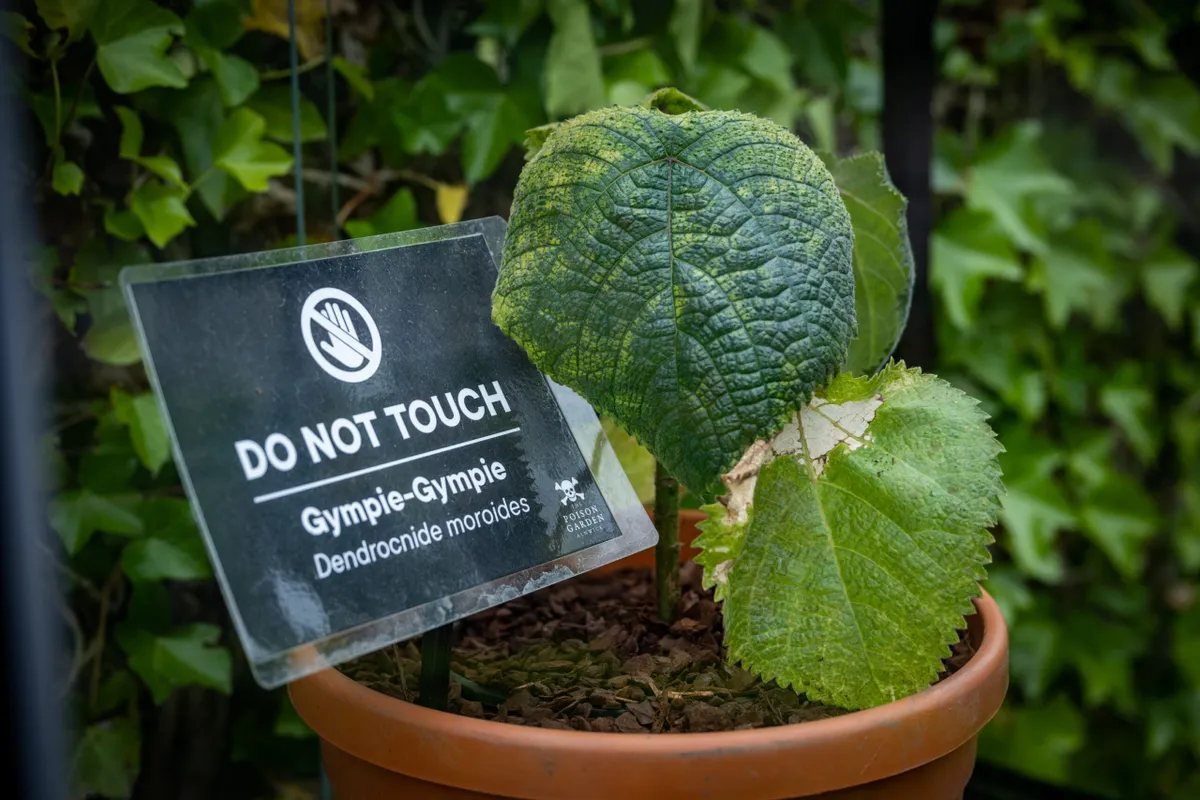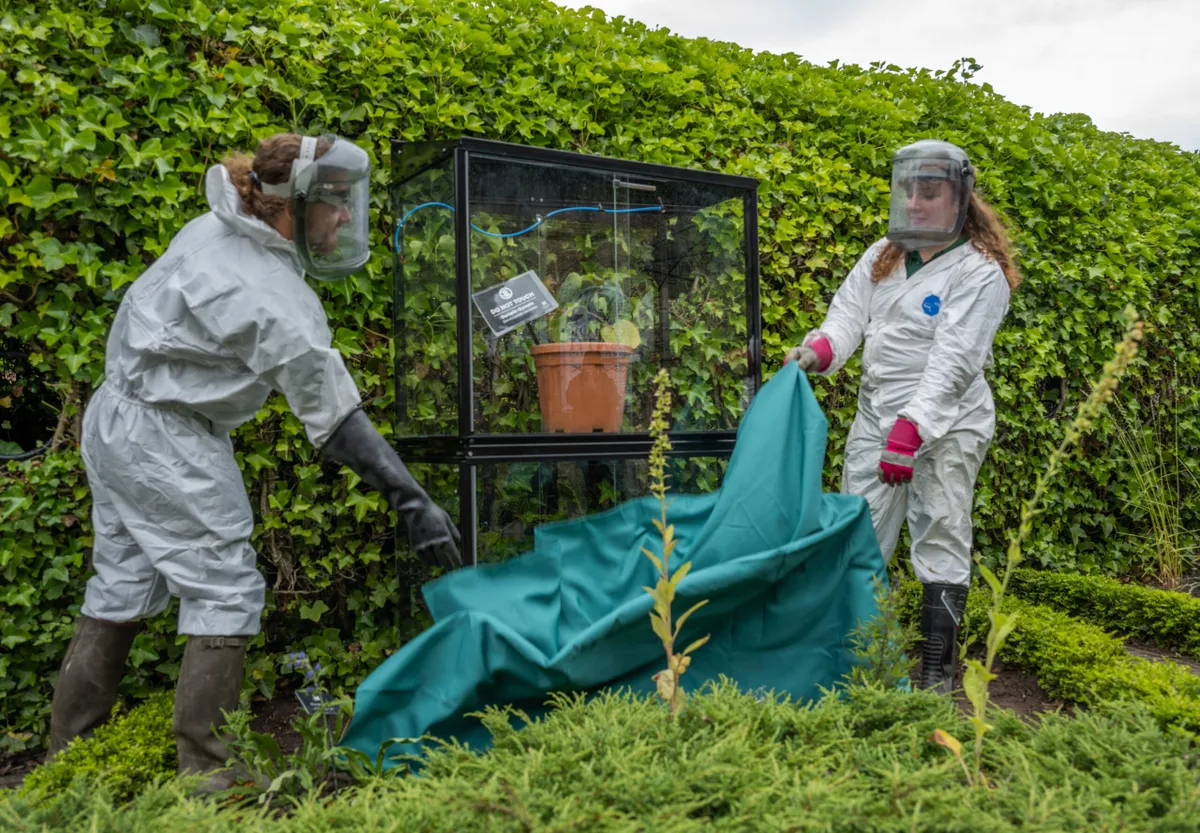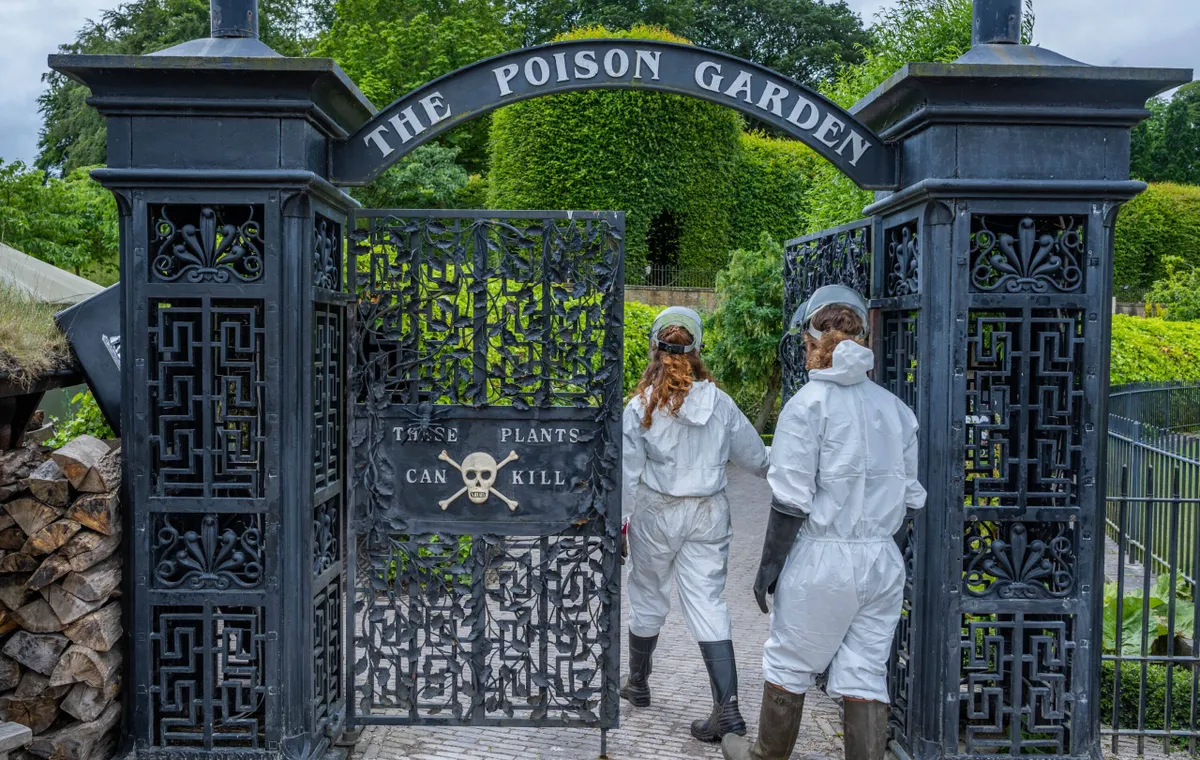The Alnwick Garden in Northumberland is home to the award-winning Poison Garden, the caged attraction filled exclusively with around 100 toxic, intoxicating, and narcotic plants. Its latest addition is the world’s most dangerous shrub – the gympie-gympie or Australian stinging tree.

The world's most venomous plant
Dendrocnide moroides is part of the Urticaceae nettle family more usually found in the rainforest areas of Australasia, the Moluccas and Indonesia. It is notorious for its painful sting likened to being burnt with hot acid and electrocuted at the same time. Pain can last for months, and in some reported cases for years, causing extreme distress to the sufferer. The plant is covered in tiny hairs, which break off at the slightest touch, releasing toxins into the skin.
The plant joins other intoxicating and narcotic plants grown in Alnwick’s securely caged Poison Garden display, which is only open on guided tours, and includes other noxious plants such as laburnum, atropa, belladonna, opium poppy and marijuana.
It is notorious for its painful sting likened to being burnt with hot acid and electrocuted at the same time.

What is Alnwick’s Poison Garden and what's its background?
As children we learn from our first nettle sting about poisonous plants and we fear them. Jane, Duchess of Northumberland, has shrewdly turned our deep and often dark fascination with all things deadly into an imaginative and weirdly compelling area of her multi-million pound public garden at Alnwick Castle. Her Poison Garden is a kind of anti-garden lurking within the wider, more polite garden of showy roses and delphiniums.
Jane has always been a bold gardener. When work first began on the garden at Alnwick seven years ago she did not want to create another ‘English’ garden. “There are enough of those already,” she announced to an often outraged and hostile gardening press. She freely admits that what she refers to as ‘lady gardeners’ do not like or see the point of the Poison Garden because whatever else it is, it is not pretty. Native poisonous plants – and there are far more of them than one might suspect – tend to be insistently green, often hairy and if they flower at all have dark, sometimes stinking flowers which smell at best sickly or at worst of rotting flesh.
Why are poisonous plants fascinating?
As the vast numbers of visitors to the Poison Garden will testify, many poisonous plants have a unique fascination over and above the aesthetic, something that keys in to a collective memory that stretches back beyond modern medicine to a time when we relied on knowledge of such plants for our well-being, or possibly more sinister acts of revenge and murder. The reason that so many toxic native plants have names such as deadly nightshade (Atropa belladonna), devil’s apples (Mandragora officinarum) and death warrant (Bryonia dioica) is because procuring the wrong plant would kill and not cure you.
The idea of the Poison Garden grew out of two trips, one to the Medici poison garden in the Italian city of Padua. Who if not the Medici would know about plants with which to bump off your enemies? The other was in a remote site in the Scottish hills south of Edinburgh called Soutra Aisle, once a medieval monastery where the monks practised medicine with the ‘soporific sponges’ infused with doses of henbane, opium and hemlock. Jane was fired up with stories of death and mayhem and thought her visitors would be too. She was right.
Public fascination
The Poison Garden opened in 2005 and was an immediate hit. Visitors are warned that once they pass the skull and crossbones gate they should not touch any plants. Some plants – such as cannabis and strychnine – are incarcerated in giant metal cages. Gympie-Gympie is kept securely in a glass case.

The surprise for most people is how many plants they recognise from either their own garden or the hedgerows – probably the most common being yew (Taxus baccata), all parts of which are highly toxic. The seeds of the castor oil plant (Ricinus communis) produce the deadly poison ricin; monkshood (Aconitum napellus), grown in gardens for its nodding mauve flowers, contains one of the most toxic plant compounds known to science, aconitine; and henbane (Hyoscyamus niger) contains hyoscine, the poison used by Dr Crippen to murder his wife.
Guides accompany all groups who tour round the Poison Garden, for visitors are not allowed in here alone. Their fascinating stories range those of strychnine – known as the ‘inheritance plant’ because it was once used in Italy by young wives eager to dispatch their elderly husbands – to the statistics associated with the most prolific killer in the entire garden, tobacco. On my visits, I found that the visitors were just as keen to tell their tales as the guides. One man rolled up his sleeves to show us, a year on, the angry weals left when pruning rue (Ruta graveolens) without wearing protection. Another visitor said she’d once watched her brother almost die after making a pea-shooter from the hollow stem of the deadly hemlock (Conium maculatum).
If nothing else, the Poison Garden makes you have more respect for the plants you once regarded as benign.
Other garden highlights at Alnwick
The Alnwick Garden was designed by Belgian Jacques Wirtz. Its many different areas each have their own personality. Water is an important feature and the central cascade with its water jets and explosive fountains is a lure, especially for children. The sculptor William Pye has designed a number of water sculptures between high topiary hedges. The former walled garden at the top of the cascade dates back to the 18th century. With its rills, box hedging enclosing herbaceous plants and pleached crab apple trees it is here that most garden lovers will find what they are looking for. Among several smaller gardens at the foot of the cascade are a rose garden, the scent of which is heady in the summer months, and a bamboo labyrinth within which it is possible to lose one’s way entirely.
Further information
The Alnwick Garden, Denwick Lane, Alnwick, Northumberland NE66 1YU. Tel 01665 511350, www.alnwickgarden.com
• Open daily, 31st March 2023 – 5 November 2023,10am-5pm – until 6pm during Northumberland school holidays. From 31 March 2023 – 3 September 2023 there is a Quiet Hour every Sunday between 9-10am. Cost £17.60, conc £16.50, child up to 16years free (max 4 per adult).